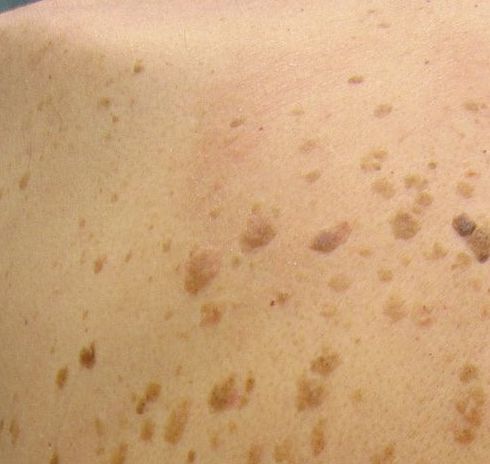 Seborrheic Keratosis is a skin condition that is characterized by dark, warty growths that can resemble moles. The growths can cause some concern because they can look like and often be mistaken for skin cancer.
Seborrheic Keratosis is a skin condition that is characterized by dark, warty growths that can resemble moles. The growths can cause some concern because they can look like and often be mistaken for skin cancer.
“The good news is that Seborrheic Keratosis is not and never will be cancerous,” says Dr. Adam Mamelak, a board certified Dermatologist and skin cancer surgeon at Sanova Dermatology in Austin, Texas. It is still unclear why some people develop this condition, although genetics is thought to play a major role. “We do see these skin lesions run in families. Often our parents or relatives have similar spots on their skin.” And while they are completely benign, there is still no good preventative measures or cure for the disorder.”
What Should I Look For?
Generally speaking, Seborrheic Keratosis can start off simply as rough patches of skin. “It typically develops into a raised growth with a warty or bumpy texture, that can be brown, black, gray or white,” Dr. Mamelak explains. Seborrheic Keratosis is, in most cases, round or oval-shaped and can appear anywhere on the body but the chest, abdomen and scalp are some of the more common areas.
The lesions can appear in groupings or as individual growths. They do not in themselves cause pain or discomfort though they may become annoying or irritated if they get caught on clothing.
What Can I Do About Them?
“Since Seborrheic Keratosis is not malignant or harmful in any way, you can choose to just leave the growths alone,” says Dr. Mamelak. “Many people, however, choose to have the growths removed for cosmetic reasons or due to annoyance or interference with clothing.”
There are a few ways to rid yourself of the growths and you should discuss the options available with your dermatologist to determine the best course of action for you.
Some of the best ways to remove Seborrheic Keratosis from the skin are noted below:
Electrosurgery – involves utilizing an high-frequency electric current to aid in the removal of the growths. This method minimizes blood loss and is a common choice for removals of this type.
Cryosurgery – uses a technique that involves liquid nitrogen to freeze tissue so it can be excised. This method is beneficial because it minimizes wound care, has a low risk of infection and requires little to no prep time.
Curettage – is a method where the lesion is scooped out with a special tool called a curette. After removal, the site is usually cauterized to minimize bleeding and reduce the risk of infection.
Thin lesion can be faded with lightning creams or removed with resurfacing treatments like chemical peels or laser. As with any type of skin growth, any changes in size, color or shape should be brought to the attention of your physician. They can make the determination on whether or not there is any reason for concern.
Contact Us
If you have any questions about Seborrheic Keratosis or any other skin conditions, please contact us and our knowledgeable staff can assist you.
